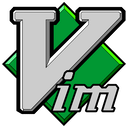Vim Cheat Sheet
Master Vim with a comprehensive cheat sheet.


Vim is a modal text editor with distinct modes for different tasks.
Understanding these modes is key to using Vim effectively:
- Normal (default): For navigation, editing commands, and text manipulation.
- Insert: For typing and inserting text.
- Visual: For selecting text blocks.
- Command-line: For executing commands.
Start with Vim Tutor
For anyone completely new to Vim, the best place to start is Vim Tutor. It's designed to be completed in about 30 minutes. By the time you're done, you'll know how to navigate, insert, delete, and save text.
To launch the tutor, just type this command in your terminal:
vimtutorVim basic operations
A few essential commands to get you started.
Open a file in Vim:
vim <filename>Basic operations:
:h " Open the help documentation
:w " Save changes
:wq " Save and quit
:q! " Quit without saving changesVim modes and movement
Insert mode
These commands are used from Normal mode to enter Insert mode.
i " Insert text before the cursor
I " Insert text at the beginning of the line
a " Append text after the cursor
A " Append text at the end of the line
o " Open a new line below the current one and insert
O " Open a new line above the current one and insertBasic motions
Navigate your text quickly and efficiently.
h " Move left
j " Move down
k " Up
l " Right
0 " Move to the start of the line
$ " Move to the end of the line
^ " Move to the first non-blank character of the line
gg " Go to the first line of the file
G " Go to the last line of the file
5G " Go to line 5Word motions
Move between words and characters.
w " Move to the beginning of the next word
b " Move to the beginning of the previous word
e " Move to the end of the current or next word
ge " Move to the end of the previous word
% " Jump between matching parentheses, braces, and bracketsVim editing and deleting
Deleting
Delete text with these powerful commands.
x " Delete the character under the cursor
dd " Delete the current line
dw " Delete from the cursor to the end of the word
D " Delete from the cursor to the end of the lineChanging
Change commands delete and then put you into Insert mode.
r " Replace a single character
cw " Change the current word
C " Change to the end of the line
cc " Change the entire lineUndo, redo, and repeating
Manage your edits with these essential commands.
u " Undo the last change
Ctrl+r " Redo the last undo
. " Repeat the last change or commandCopy, cut, and paste
These operations are often referred to as yanking (copying), deleting (cutting), and pasting.
yy " Yank (copy) the current line
yw " Yank (copy) the current word
p " Paste after the cursor
P " Paste before the cursorVim visual mode
Use visual mode for selecting and operating on a block of text.
v " Start character-wise visual selection
V " Start line-wise visual selection
Ctrl+v " Start block-wise visual selection
y " Yank (copy) the selected text
d " Delete the selected textVim searching and replacing
Find and replace text with power.
/word " Search forward for 'word'
?word " Search backward for 'word'
n " Go to the next match
N " Go to the previous match
* " Search for the word under the cursor
# " Search backwards for the word under the cursor
:%s/old/new/g " Find and replace all 'old' with 'new' in the file
:%s/old/new/gc " Find and replace all with confirmationVim file navigation
Vim has a built-in file explorer called Netrw to navigate your project without leaving the editor.
Open the file explorer:
:Explore " Open in the current window
:Lexplore " Open in a new horizontal split (left)
:Vexplore " Open in a new vertical splitNavigate with these keys:
Enter " Open a directory or file
- " Go up to the parent directory
u " Go back to the previous directory in history
mb " Bookmark the current directory
gb " Jump to a bookmarked directoryVim window management
Split your screen to work on multiple files or sections of the same file.
:split " Horizontally split the window
:vsplit " Vertically split the window
Ctrl-w h " Move to the window to the left
Ctrl-w j " Move to the window below
Ctrl-w k " Move to the window above
Ctrl-w l " Move to the window to the right
Ctrl-w q " Close the current split